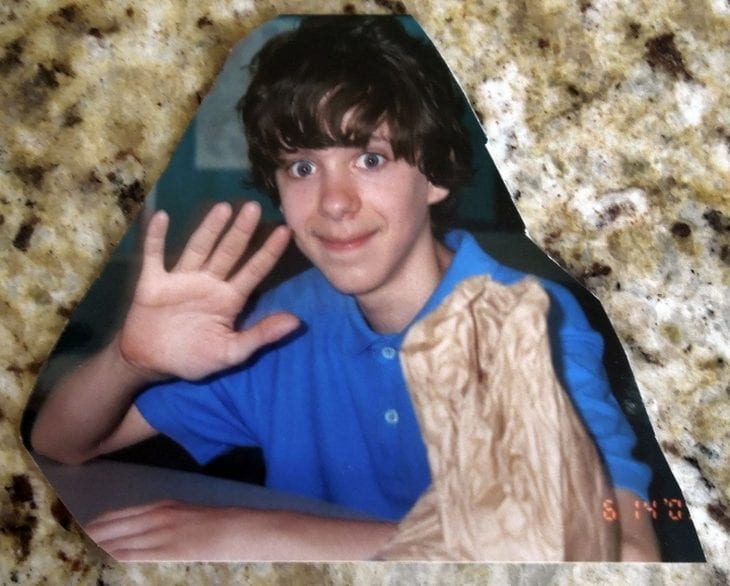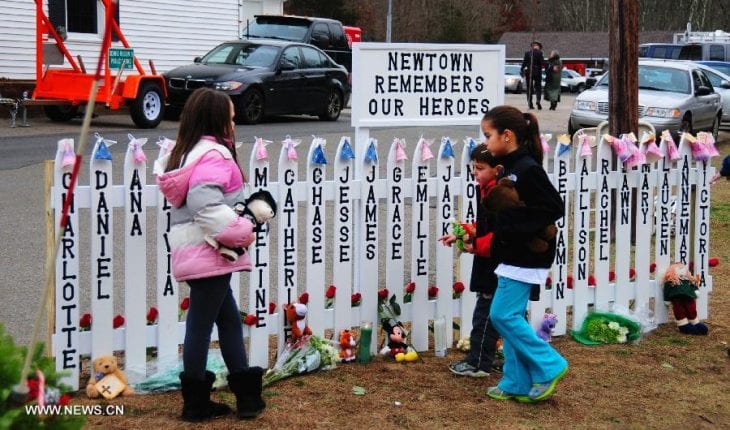The first person that Adam Lanza, the 20-year-old who murdered 20 children and six adults at Sandy Hook Elementary, killed on December 14, 2012, was his own mother. She was murdered in her pajamas, lying her in bed, with four bullets to the head. The New Yorker has a profile of Adam’s father, Peter Lanza, in their most recent issue. Written by Andrew Solomon, it is the first time that Peter Lanza has ever spoken to the press about his son’s crimes. However, what stuck out to me most was not Peter unfathomable trauma or even Adam’s cornucopia of possible illnesses — depression? OCD? schizophrenia? insanity? — but instead Adam’s mother and Peter’s ex-wife, Nancy Lanza.

Source: nydailynews.com
In the mid-2000s, a Yale psychiatry nurse specialist named Kathleen Koenig met with Adam after a time period in which he had started and then abruptly stopped using the antidepressant Lexapro, due to negative side effects. Throughout his teens, The New Yorker describes, Adam would frequently have “meltdowns” and cry alone, sometimes for hours at a time, behind a locked door. Nurse Koenig wrote that she implored Adam to take medication: “I told him he’s living in a box right now, and the box will only get smaller over time if he doesn’t get some treatment.”
Reading that, it seems to me that Nancy Lanza was also living in a box that was only getting smaller if Adam didn’t get treatment.
Peter Lanza described Adam as a child who was first “weird,” then diagnosed with sensory-integration disorder as a kid and then Aspgerger’s (on the autism spectrum) at age 13, and then veering off someplace deeper and darker through the next seven years. He had his parents’ concern and support throughout his entire life, but Peter himself admitted he spent the majority of his time working at his job as a successful vice president for a subsidiary of General Electric. Both before the divorce and after, it was Nancy Lanza who primarily cared for Adam.

Source: NY Daily News
This was not necessarily by her choice. In the years before Sandy Hook, Adam Lanza cut himself off from Peter, apparently because he was angry at his dad for discouraging him to go to community college. Eventually, Adam distanced himself from his older brother, Ryan, as well, despite the fact that Ryan tried to reach out to Adam repeatedly. Peter Lanza also tried to reach out to his son about spending time together, although Adam’s condition was so fragile that both Peter and Nancy were concerned about rocking the boat. Almost by default, the only family member Adam communicated with was his mother. Peter’s explanation for this dynamic is telling: “I think he saw that he could control her more than he could control me.” Writes Solomon, “Peter and [his new wife Shelley] now suspect that Adam deliberately shut them out to hide his psychological decay.”
Here is how The New Yorker described Nancy and Adam’s life together:
[Psychiatrist Dr. Robert] King noted evidence of obsessive-compulsive disorder, which often accompanies autism. Adam refused to touch metal objects such as doorknobs and didn’t like his mother to touch them, either, because he feared contamination. “Adam imposes many strictures, which are increasingly onerous for mother,” King wrote. “He disapproves if mother leans on anything in the house because it is ‘improper.’ … He is also intolerant if mother brushes by his chair and objected to her new high heel boots, because they were ‘too loud.’ … If mother walks in front of him in the kitchen, he would insist she redo it.” King was concerned that Adam’s parents seemed to worry primarily about his schooling, and said that it was more urgent to address “how to accommodate Adam’s severe social disabilities in a way that would permit him to be around peers.” King saw “significant risk to Adam in creating, even with the best of intentions, a prosthetic environment which spares him having to encounter other students or to work to overcome his social difficulties.” And he concluded that Nancy was “almost becoming a prisoner in her own house.”
Elsewhere in the piece, Andrew Solomon writes even more evocatively that Nancy Lanza appeared to have walled herself in with a mentally ill child and very little outside support:
All parenting involves choosing between the day (why have another argument at dinner?) and the years (the child must learn to eat vegetables). Nancy’s error seems to have been that she always focused on the day, in a ceaseless quest to keep peace in the home she shared with the hypersensitive, controlling, increasingly hostile stranger who was her son. She thought that she could keep the years at bay by making each day as good as possible, but her willingness to indulge his isolation may well have exacerbated the problems it was intended to ameliorate.
It saddens me that the entire Lanza family dealt with such serious mental illness their whole lives. It saddens me that Nancy Lanza shouldered most of the burden for caring for her mentally ill son, only to be murdered by him in her own home. And it saddens me in particular that so many people direct blame at Nancy for Adam’s murder spree, as if she, herself, were responsible for it. On the contrary, her life sounds as if it became very, very small because of her son. It seems less like a “life” and more like a profound state of being stuck.
I am not trying to defend the Lanza family’s treatment or lack thereof towards their son; I am, though, defending Nancy Lanza against the charge that she did “nothing.” It may feel rational to blame her, because she gave her son access to so many guns. But as The New Yorker article explains, shooting at the gun range was an activity that Adam, who was largely uninterested in socializing, was willing to do with his family. Adam’s interest in killing and mass murders was a “private obsession … there were still no outward signs of violent tendencies.” Nancy Lanza slept with her bedroom (where she was eventually murdered by her son) unlocked, Peter said; she also never told her friends or family members that she was physically afraid of Adam. Though they owned guns and went to the shooting range, it does not sound to me like either Adam or Nancy were “gun nuts,” as I’ve read both of them described.
Fundamentally, it seems that Nancy Lanza felt profound shame and denial about the reality of her life. Peter Lanza told The New Yorker that his ex-wife probably didn’t seek more help for Adam and for herself as a matter of pride. “She wanted everyone to think everything was okay,” he told the magazine.
Of course as parents, both the Lanzas had a responsibility to their child and society at large that they should have prioritized over their own feelings of shame. But I don’t think their failing in this regard is too extraordinary. As someone whose family is veritably pickled with mental illness and addiction, it is difficult for me to condemn another person for being in denial. Life amongst the mentally ill is being presented by a variety of shitty choices and having to figure out which one is the least shitty. So, to me, the ultimate responsibility for how Adam Lanza turned into a person who murders 1st graders is not either parent. The ultimate responsibility falls on our society, which sees mental illness as so shameful that it can make it difficult for kids like Adam and their parents, particularly Nancy, to get the help they need.

Source: victorygirlsblog.com
Twenty-seven people died by Adam Lanza’s hands that day. I wish more people didn’t ignore that his long-suffering mother was one of them.
Original by: Jessica Wakeman
